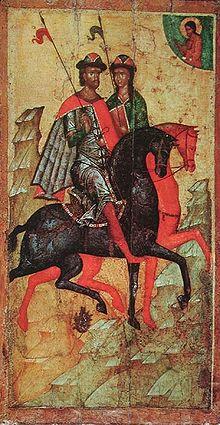
In Eastern Christianity, a passion bearer (Russian: страстотéрпец, tr. strastoterpets, IPA: [strəstɐˈtʲɛrpʲɪts]) is one of the various customary titles for saints used in commemoration at divine services when honouring their feast on the Church Calendar; it is not generally used in the Latin Church.[1]
The term can be defined as a person who faces his or her death in a Christ-like manner. Unlike martyrs, passion bearers are not explicitly killed for their faith, though they hold to that faith with piety and true love of God. Thus, although all martyrs are passion bearers, not all passion bearers are martyrs.
Notable passion bearers include the brothers Boris and Gleb, Alexander Schmorell (member of the White Rose resistance movement), and the entire Imperial Family of Russia, murdered by the Bolsheviks via execution on July 17, 1918.[2]